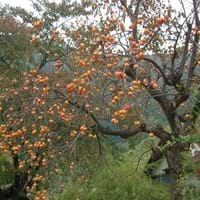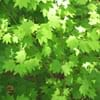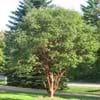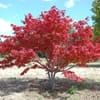Life Span
Perennial
Perennial
Origin
Australia
China, Korea
Types
Not Available
Fuyu Persimmons
Hachiya Persimmons
Among(Ye mon)
Maru Persimmons
Habitat
Scrubs, tussock grasslands, Upland savannas
Woodlands
USDA Hardiness Zone
10-11
6-10
Sunset Zone
8, 9, 12, 13, 14, 15, 16, 17, 18, 19, 20, 21, 22, 23, 24
H1, 6, 7, 8, 9, 12, 14, 15, 16, 18, 19, 20, 21, 22, 23, 24
Habit
Upright/Erect
Pyramidal
Flower Color
Lemon yellow
Light Yellow
Flower Color Modifier
Bicolor
Bicolor
Fruit Color
Gray Green
Orange
Leaf Color in Spring
Blue Green
Green
Leaf Color in Summer
Blue Green
Green
Leaf Color in Fall
Blue Green
Yellow, Burgundy, Orange Red
Leaf Color in Winter
Blue Green
Not Available
Leaf Shape
Long Narrow
Elliptic
Plant Season
Spring
Summer, Fall, Winter
Sunlight
Full Sun
Full Sun, Partial Sun
Type of Soil
Loam, Sand
Clay, Loam
The pH of Soil
Acidic, Neutral, Alkaline
Acidic, Neutral
Soil Drainage
Well drained
Well drained
Bloom Time
Spring, Late Winter
Summer
Tolerances
Drought
Not Available
Where to Plant?
Ground
Ground
How to Plant?
Seedlings
Seedlings
Plant Maintenance
Medium
Medium
Watering Requirements
Do not water excessively
Do not water excessively, Do not water frequently, Prefer drip-irrigation instead of Over-head watering
In Summer
Lots of watering
Lots of watering
In Spring
Moderate
Moderate
In Winter
Average Water
Average Water
Soil pH
Acidic, Neutral, Alkaline
Acidic, Neutral
Soil Type
Loam, Sand
Clay, Loam
Soil Drainage Capacity
Well drained
Well drained
Sun Exposure
Full Sun
Full Sun, Partial Sun
Pruning
Remove dead or diseased plant parts, Requires little pruning
Remove damaged leaves, Remove dead branches, Remove dead leaves
Fertilizers
All-Purpose Liquid Fertilizer, No fertilizers needed
All-Purpose Liquid Fertilizer, Apply N-P-K
Pests and Diseases
Insects, Root rot
Caterpillars, Mealybugs, Nematodes, Red blotch
Plant Tolerance
Drought
Drought, Full Sun, Variety of soil types
Flowers
Showy
Insignificant
Flower Petal Number
Single
Single
Foliage Texture
Fine
Medium
Foliage Sheen
Matte
Glossy
Self-Sowing
Yes
Not Available
Attracts
Butterflies
Birds
Allergy
Asthma, Eye irritation, Headache, Nose Irritation, Throat itching, Vomiting
Not Available
Aesthetic Uses
Showy Purposes
Bonsai
Beauty Benefits
Not Available
Not Available
Environmental Uses
Air purification, soil stabilisation
Air purification
Medicinal Uses
Not Available
Anthelmintic, Antitussive, Antivinous, Appetizer, Astringent, Demulcent, Expectorant, Laxative
Part of Plant Used
Flowers, Sap, Seeds
Fruits
Other Uses
Used as a dye, Wood is used fore making tools
Cosmetics
Used As Indoor Plant
No
No
Used As Outdoor Plant
Yes
Yes
Garden Design
Shade Trees, Street Trees
Edible, Fruit / Fruit Tree, Topiary / Bonsai / Espalier
Botanical Name
ACACIA aneura
DIOSPYROS kaki 'Hongsi'
Common Name
Mulga, True Mulga
Asian Persimmon, Hongsi Persimmon, Japanese Persimmon, Kaki
In Hindi
Mulga
Japanese Persimmon
In German
Mulga
Japanese Persimmon
In French
Mulga
Persimmon japonais
In Spanish
Mulga
El caqui japonés
In Greek
mulga
Ιαπωνικά Λωτός
In Portuguese
Mulga
Persimmon japonês
In Polish
Mulga
japoński Persimmon
In Latin
Mulga
Persimmon Italica
Phylum
Magnoliophyta
Tracheophyta
Class
Magnoliopsida
Magnoliopsida
Family
Fabaceae
Ebenaceae
Clade
Angiosperms, Eudicots, Rosids
Angiosperms, Asterids, Eudicots
Tribe
Not Available
Not Available
Subfamily
Not Available
Not Available
Number of Species
Not Available
Importance of Mulga Tree and Japanese Persimmon
Want to have the most appropriate plant for your garden? You might want to know the importance of Mulga Tree and Japanese Persimmon. Basically, these two plants vary in many aspects. Compare Mulga Tree and Japanese Persimmon as they differ in many characteristics such as their life, care, benefits, facts, etc. Every gardener must at least have the slightest clue about the plants he wants to plant in his garden. Compare their benefits, which differ in many ways like facts and uses. The medicinal use of Mulga Tree is Not Available whereas of Japanese Persimmon is Anthelmintic, Antitussive, Antivinous, Appetizer, Astringent, Demulcent, Expectorant and Laxative. Mulga Tree has beauty benefits as follows: Not Available while Japanese Persimmon has beauty benefits as follows: Not Available.
Compare Facts of Mulga Tree vs Japanese Persimmon
How to choose the best garden plant for your garden depending upon its facts? Here garden plant comparison will help you to solve this query. Compare the facts of Mulga Tree vs Japanese Persimmon and know which one to choose. As garden plants have benefits and other uses, allergy is also a major drawback of plants for some people. Allergic reactions of Mulga Tree are Asthma, Eye irritation, Headache, Nose Irritation, Throat itching and Vomiting whereas of Japanese Persimmon have Not Available respectively. Having a fruit bearing plant in your garden can be a plus point of your garden. Mulga Tree has no showy fruits and Japanese Persimmon has showy fruits. Also Mulga Tree is not flowering and Japanese Persimmon is not flowering . You can compare Mulga Tree and Japanese Persimmon facts and facts of other plants too.





